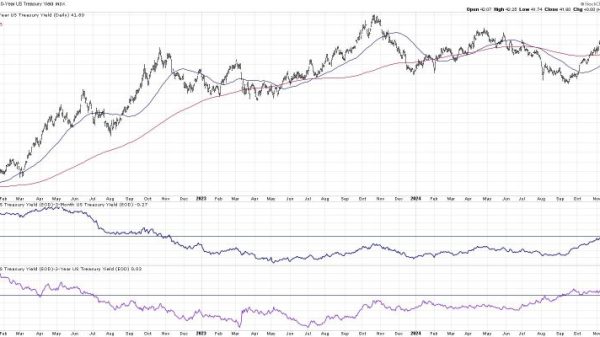Last Week’s Pullback Is a Buying Opportunity
Understanding market trends and reacting appropriately is key to successful investing. Investors often find themselves scrutinizing market movements for buying opportunities and adjusting their strategies accordingly. Last week’s pullback in the market may have caused concern for some, but seasoned investors recognize that such dips can present favorable buying opportunities. Let’s delve deeper into the significance of last week’s pullback and why it should be viewed as a buying opportunity.
1. Market Volatility Presents Opportunities
Market volatility is inherent and can be triggered by various factors such as economic indicators, geopolitical events, or corporate earnings reports. While market volatility can lead to short-term fluctuations, it also provides opportunities for investors to buy assets at discounted prices. Last week’s pullback, characterized by sharp declines in the stock market, offered investors a chance to acquire quality stocks at lower valuations.
2. Long-Term Perspective
Successful investors often adopt a long-term perspective when analyzing market movements. Instead of being swayed by short-term fluctuations, they focus on the underlying fundamentals of the companies they invest in. Last week’s pullback should be viewed in the context of the broader market trends and economic outlook. Investors who take a long-term view can use such market pullbacks to strengthen their investment portfolios and capitalize on potential gains in the future.
3. Dollar-Cost Averaging Strategy
Dollar-cost averaging is a strategy that involves investing a fixed amount of money at regular intervals, regardless of market conditions. This approach helps investors mitigate the impact of market volatility and can be especially effective during pullbacks. By sticking to a dollar-cost averaging strategy, investors can take advantage of lower prices during market dips and benefit from potential market recoveries over time.
4. Sector Rotation Opportunities
Market pullbacks often create opportunities for sector rotation, where investors reallocate their investments to sectors that are poised for growth. During last week’s pullback, certain sectors may have been more resilient than others, offering attractive opportunities for investors to diversify their portfolios. By identifying sectors with strong growth potential and adjusting their allocations accordingly, investors can position themselves for long-term success.
5. Risk Management
Managing risk is paramount in investing, particularly during periods of market volatility. While last week’s pullback may present buying opportunities, it is essential for investors to assess their risk tolerance and diversify their portfolios to mitigate potential losses. Implementing risk management strategies, such as setting stop-loss orders and maintaining a well-diversified portfolio, can help investors navigate market fluctuations and protect their investments.
In conclusion, last week’s pullback in the market should be viewed as a buying opportunity rather than a cause for alarm. By understanding market trends, adopting a long-term perspective, utilizing dollar-cost averaging, seizing sector rotation opportunities, and implementing effective risk management strategies, investors can capitalize on market pullbacks and enhance their investment portfolios. As with any investment decision, conducting thorough research and seeking professional advice are vital components of successful investing during volatile market conditions.




























